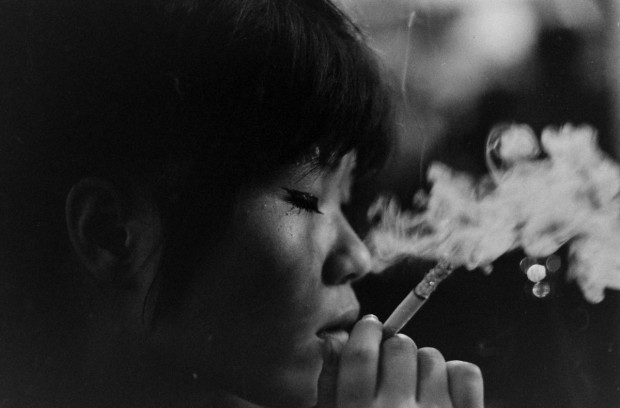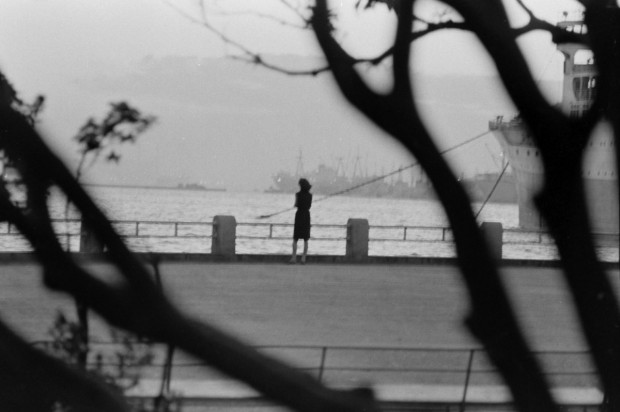An iconographic and text archive related to communication, technology and art.
☛ LIFE: “Teenage Wasteland: Japanese Youth In Revolt” by Ben Cosgrove, original text by Robert Morse, photos by Michael Rougier, 1964. First spotted via the wandrlustr.
The photo above is part of a series produced by LIFE photographer Michael Rougier while on assignment in Japan, in 1964. The series originally ran in a special issue of LIFE on Japan, under the title “The Young In Rebellion”. The whole issue, published in September 11, 1964, is available on Google Books (see pp. 86A-93). Although the photo displayed above was not selected for publication, it is displayed on LIFE.com website, alongside 29 others photos from the same series and a text by editor Ben Cosgrove recalling the original piece.
The girl in the photo is Yoko. Here is an excerpt of how she was profiled by Robert Morse in the magazine, in 1964:
Yoko, a friend of Naron and a member of his group, is 17, a country girl who lived at home, until her father died. But she did not get along with her mother―“she disagrees with everything I do or say”― and two years ago Yoko ran away to Tokyo. She worked briefly in a bar where the manager “treated me as a doll and gave me everything I wanted.” One day, wandering through the streets, she found herself in front of a jazz coffee shop and went in. She found the place sordid but “the people made me feel at home”
Morse and Rougier were documenting the “sleeping pills kids” of Tokyo: a “rebellious younger generation” (p. 86A) of post-war kids who were turning their back to tradition and going “Western with a vengeance” (p. 89). They were the rariterru, the people Yoko met in the jazz coffee shop: “kids intoxicated by sleeping pills, who take mild pills and try to drowse through life, withdrawing into nothingness”. (p. 91). Naron was their leader. After she met them, Yoko told LIFE correspondents, she had only been happy on the pills.
Like the other pill kids, she remembers only yesterday and seldom looks forward to more than tomorrow. […] If Yoko had enough money, she says, she would study painting. When she was in school a teacher once praised her drawings. But mostly she dreams of traveling, of running away from her country entirely. She puts all her belongings in a shopping bag and goes down the waterfront at Yokohama to look at the ships sailing to distant places. “I want to play on an Italian beach,” she says, or, recalling scenes in a French movie, “I’d love to go to St. Tropez.”
Aimless and alone, Yoko sits in a coffee shop in the late afternoon, hoping a friend will come along. She often ends her long nights sprawled on a futon in a friend’s room. But sometimes she goes down to the port in Yokohama to watch the ships sail off to the places she only wishes she could go. At sunset, her “day” begins again. (p. 92)
Michael Rougier (June 16, 1925, January 5, 2012) was a staff photographer for LIFE for more than 20 years. He covered the Korean War and the Hungarian revolution of 1956. He also took an iconic photo of Johnny Cash walking along the beam of a rail road track (the photo was published in the issue of November 21, 1969). After his assignment in Japan, Rougier participated in the Texas Tech Shackleton Glacier Expedition, in Antarctica. During the expedition, he survived a serious fall while climbing a hill, and the hill was named after him: Rougier Hill. Read more at LIFE.com: “Photographer Spotlight: Michael Rougier”. Times Colonist has his obituary.

- By Philippe Theophanidis
- on
- ― Published in Art, Communication, Photography
- Tagged: confusion, drugs, Japan, lack, life, Michael Rougier, rebellion, révolution, tradition, youth

